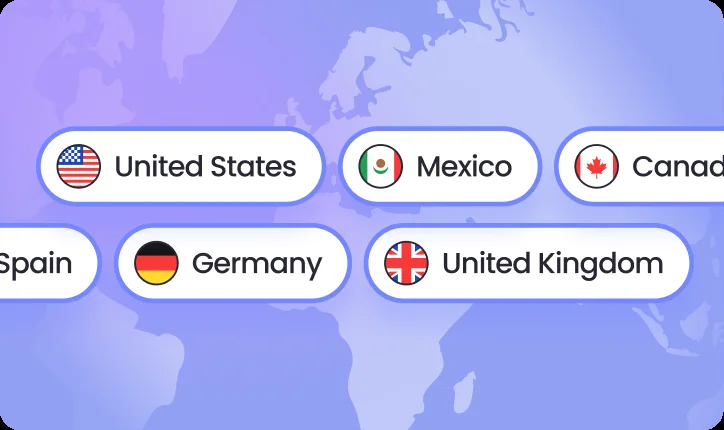Key Takeaways

Payroll cycle: Employers in the Philippines commonly process payroll semi-monthly or monthly, depending on company policy and employment agreements.

Tax filing: Withholding tax on compensation is generally remitted monthly, with corresponding quarterly and annual reporting to the Bureau of Internal Revenue (BIR).

Employer taxes: Employers contribute to mandatory programs including SSS, PhilHealth, and Pag-IBIG, alongside withholding obligations.

Tax year: The Philippines follows the calendar year for income tax and payroll reporting.

Payroll processing methods: Payroll is typically handled through electronic payroll systems integrated with BIR e-services or outsourced to local payroll providers.
Understanding payroll taxes in the Philippines is essential for both small business owners and larger enterprises to ensure compliance with local regulations and maintain positive employee relations. Employers must navigate various taxes, including income tax withholding, social security contributions, and health insurance premiums. Managing these obligations can be challenging, and non-compliance may lead to penalties and strained employee relationships. This article aims to guide you through the key aspects of payroll taxes in the Philippines, covering calculations, deadlines, and filing procedures, while noting that tax laws may vary based on factors such as location, income, or business size.
Fiscal Year in The Philippines
1 January - 31 December is the 12-month accounting period that businesses in The Philippines use for financial and tax reporting purposes.
Payroll Cycle in The Philippines
The payroll cycle in The Philippines is usually bi-monthly, with employees being paid by the 16th and last working day of the month.
Bonus Payments in The Philippines
Employees are entitled to a 13th-month salary, which is 1/12th of their annual earnings, paid in full around December 24th or divided into two with one half in June.
In the Philippines, employers are responsible for several types of payroll taxes, each with specific regulations.
Income Tax Withholding
Employers act as withholding agents, deducting income taxes from employees' monthly wages based on a graduated tax system. For instance, annual incomes up to ₱250,000 are taxed at 0%, while incomes over ₱8,000,000 are taxed at 35%. Withheld taxes must be remitted to the Bureau of Internal Revenue (BIR) by the 10th day of the following month.
Social Security System (SSS) Contributions
The SSS provides protection against disability, sickness, maternity, old age, and death. Employers contribute 9.5% of the employee's monthly salary, while employees contribute 4.5%. Remittances are due by the 15th day of the following month.
Philippine Health Insurance Corporation (PhilHealth) Contributions
PhilHealth offers health insurance coverage. The total contribution rate is 4% of the employee’s base monthly wage, shared equally between employer and employee, with an income ceiling of ₱80,000. Contributions should be remitted by the 10th day of the following month.
Home Development Mutual Fund (Pag-IBIG) Contributions
Pag-IBIG is a government-guaranteed savings fund primarily aimed at helping employees finance new homes. Employers contribute 2% of the employee's monthly compensation, while employees contribute 1% on salaries of ₱1,500 or below and 2% on salaries over ₱1,500. Contributions are due by the 10th day of the following month.
Proper payroll setup is crucial to comply with legal requirements and maintain employee trust. Employers must register with the BIR, SSS, PhilHealth, and Pag-IBIG, and ensure accurate calculation and timely remittance of all payroll taxes and contributions.
Payroll Tax Salary Calculation
Calculating payroll taxes in the Philippines involves several moving parts, from identifying what’s taxable to applying the correct government rates. Here’s how employers can compute payroll taxes accurately and stay compliant with the Bureau of Internal Revenue (BIR) and other agencies.
Step 1: Start with the employee’s gross pay
Begin with the total compensation an employee earns for the pay period. This includes basic salary, taxable allowances, overtime pay, commissions, and other forms of compensation. Non-taxable benefits should not be added here yet.
Step 2: Identify and exclude non-taxable benefits
Certain benefits are excluded from tax calculations. These include the 13th-month pay and other bonuses up to ₱90,000, as well as government-mandated de minimis benefits like rice subsidies or uniform allowances within prescribed limits. Subtract these from the gross pay to arrive at the taxable portion of income.
Step 3: Deduct mandatory employee contributions
Employers must withhold and remit contributions to the three key social agencies:
- SSS (Social Security System) – Provides retirement, sickness, and maternity benefits.
- PhilHealth – Covers health insurance contributions.
- Pag-IBIG Fund – Serves as a savings and housing fund.
These deductions reduce the employee’s taxable income and are shared by both employer and employee. The applicable rates are based on the employee’s salary bracket and are updated periodically.
Step 4: Determine the employee’s taxable income
Taxable income is what remains after subtracting non-taxable benefits and mandatory contributions from the gross pay. This figure is the basis for computing the withholding tax.
Step 5: Apply the BIR withholding tax table
Using the most recent BIR withholding tax schedule, identify the correct tax rate corresponding to the employee’s taxable income and pay frequency (monthly, semi-monthly, or weekly). Compute the withholding tax and deduct it from the employee’s pay.
Step 6: Compute the employee’s net pay
Finally, subtract all deductions, withholding tax plus employee shares of SSS, PhilHealth, and Pag-IBIG, from the gross pay. The result is the employee’s net take-home pay for the period.
Example of Salary Tax Calculation
Your rmployee earns ₱40,000/month.
- SSS: ₱1,620 (₱900 employer + ₱720 employee)
- PhilHealth: ₱2,000 (₱1,000 each)
- Pag-IBIG: ₱200 (₱100 each)
- Withholding tax: ₱1,875 (approx., per BIR table)
Net Pay = ₱40,000 − ₱720 − ₱1,000 − ₱100 − ₱1,875 = ₱36,305
Submitting Payroll Tax in the Philippines
Employers can submit taxes through various methods:
- Online Portals: Utilize the online systems provided by BIR, SSS, PhilHealth, and Pag-IBIG for electronic filing and payment.
- Authorized Agent Banks (AABs): Payments can be made through banks accredited by the respective agencies.
- Over-the-Counter: Direct payments at agency offices or designated payment centers.
Payroll Tax Due Dates in the Philippines
Understanding the tax obligations for both employers and employees is crucial when operating in the Philippines' business landscape. This section explains how taxes and statutory fees affect payroll and individual earnings in the Philippines.
Employer Tax Contributions
Employer payroll contributions are generally estimated at an additional 14% + 950 PHP on top of the employee salary in The Philippines.
Employee Payroll Tax Contributions
In The Philippines , the typical estimation for employee payroll contributions cost is around 10% + 450 PHP.
Individual Income Tax Contributions
Individual income tax in the Philippines follows progressive rates ranging from 0% to 35%, with household status and the number of children being additional factors that can impact overall rates.
Pension in The Philippines
Social security contributions fund the public pension system. Upon retirement due to old age, members are eligible for a retirement benefit, provided they've made a minimum of 120 monthly contributions. This benefit can be received as a monthly pension or a lump sum.
Disclaimer
THIS CONTENT IS FOR INFORMATIONAL PURPOSES ONLY AND DOES NOT CONSTITUTE LEGAL OR TAX ADVICE. You should always consult with and rely on your own legal and/or tax advisor(s). Playroll does not provide legal or tax advice. The information is general and not tailored to a specific company or workforce and does not reflect Playroll’s product delivery in any given jurisdiction. Playroll makes no representations or warranties concerning the accuracy, completeness, or timeliness of this information and shall have no liability arising out of or in connection with it, including any loss caused by use of, or reliance on, the information.
.svg)
.svg)
.svg)







.svg)



.png)

.webp)









.svg)